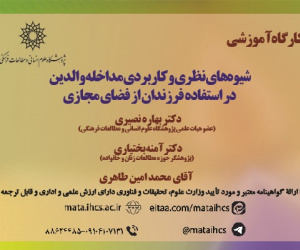درک سازه تفکر استراتژیک در مطالعات سازمان و مدیریت: مرور کتاب سنجی و تحلیل محتوا
آرشیو
چکیده
هدف: تفکر استراتژیک به عنوان یک شایستگی محوری برای مواجهه با پیچیدگی و عدم قطعیت محیطی، در طول حدود چهار دهه گذشته از طریق نظریه ها و رویکردهای متعدد و مختلف مراحل تکامل خود را طی کرده است. هدف اصلی پژوهش حاضر انجام یک مطالعه جامع کتاب سنجی بر دانشی است که در حدود چهار دهه اخیر در این حوزه انباشته شده است تا بینشی عمیق و کاربردی ارائه نماید.روش پژوهش: با پیروی از روش شناسی استاندارد کتاب سنجی، ابتدا پایگاه استنادی اسکوپوس مورد جستجو قرار گرفت و تعداد 766 مقاله یافت شد که پس از فاز پیش پردازش مقالات براساس الگوریتم پریزما، تعداد 148 مقاله وارد مرحله تحلیل گردید. به منظور تحلیل مطالعات، رویکردی آمیخته مورد کاربرد قرار گرفت، بدین صورت که تحلیل کتاب سنجی (کمی) بر روی پژوهش ها اعمال شد تا عملکرد، ساختار فکری، ساختار مفهومی و ساختار اجتماعی حوزه تفکر استراتژیک مورد بررسی قرار گیرد. همچنین در فاز کیفی، تعداد 30 مقاله برتر تحت تحلیل محتوای پنهان قرار گرفتند.یافته ها: بررسی شبکه همکاری نویسندگان نشان دهنده عدم وجود شبکه های همکاری در حوزه تفکر استراتژیک است. رهبری، فرهنگ سازمانی، مدیریت تغییر، کارآفرینی، نوآوری، مدیریت دانش و هوش مصنوعی به عنوان جهت گیری های کلیدی پژوهش در حوزه تفکر استراتژیک شناسایی شدند که دو مورد اول توجه بیشتری را در مطالعات به خود معطوف داشته اند. هفت مضمون اصلی (پیش نیازها، پیامدها، ابعاد، فعالیت های پشتیبان، ویژگی ها، حوزه های مرتبط در رشته مدیریت و روش شناسی) در تحلیل محتوای پنهان ظهور یافتند.نتیجه گیری: بینش های جامع ارائه شده در این مطالعه راهنمای ارزشمندی برای پژوهشگران، دانشجویان، مدیران و نشریات حوزه استراتژی خواهد بود که الزامات آن ها مورد بحث قرار گرفته است.Understanding Strategic Thinking: An Insight from Bibliometric and Content Analysis
Objective: The main objective of the current research is to perform a comprehensive bibliometric study on the knowledge accumulated over the last four decades in the field of strategic thinking in business and management, in order to provide a profound, critical and practical insight.Method: Utilizing bibliometric analysis, Scopus citation database was searched and 766 articles were retrieved. After the pre-processing phase of articles, 148 articles entered the analysis stage. Analysis of the scientific performance as well as co-citation analysis, co-occurrence analysis, and co-authorship analysis were conducted. Furthermore, the top 30 articles were subjected to latent content analysis.Results: Based on performance objectives, the most effective articles, authors, journals, institutions and countries were identified. In network analysis, the examination of co-authorship network indicates the absence of significant clusters. Multiple research trends and research gaps were identified through the analysis of co-occurrence of keywords. Seven themes emerged in the latent content analysis, which serve representing key concepts in the field of strategic thinking. The present study is the first attempt to analyze the performance as well as intellectual and conceptual structure in the field of strategic thinking.Conclusions: Researchers and students attain a comprehensive perspective on the state of accumulated knowledge in this field and can leverage the intellectual and conceptual structure as well as emerging themes presented to develop new perspectives and topics. Journals can take the initiative to foster action or guide research, contributing to the advancement of this field.











